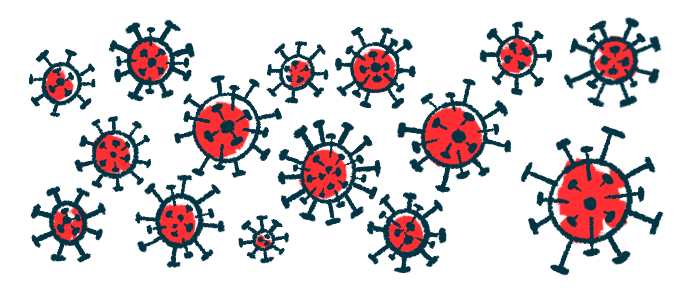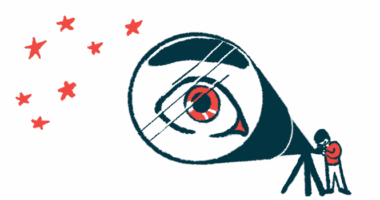Children with SMA at risk for RSV-related hospitalization: Study
Researchers studied outcomes among 12 children with type 1, type 2

Children with spinal muscular atrophy (SMA) are at a higher risk of hospitalization due to respiratory tract infections, including those caused by the respiratory syncytial virus (RSV), a small, single-center study in Switzerland suggests.
Although 1 in 4 hospitalizations was due to an RSV infection, all the children with SMA given seasonal RSV-preventive treatment with palivizumab avoided being hospitalized. Palivizumab is sold as Synagis in the U.S.
The study, “Impact of respiratory tract infections on spinal muscular atrophy with focus on respiratory syncytial virus infections: a single-centre cohort study,” was published in the Swiss Medical Weekly.
In SMA, progressive muscle weakness and atrophy, or shrinkage, mainly affects motor function, but also often causes problems with speaking, swallowing, and breathing. Lung function decline in SMA increases the susceptibility to respiratory tract infections, or those affecting the nose, throat, and lungs. These infections can further impact motor function and the need for prolonged nutritional and/or breathing support, and are considered the leading cause of further illness and mortality in SMA.
RSV is a common cause of lower respiratory tract (lung) infections in infants and young children, with nearly all becoming infected by age 2. It’s estimated that RSV is responsible for up to 90% of hospitalizations due to bronchiolitis, or inflammation of the small airways in the lungs.
The risk of RSV can be curbed with preventive treatment using the antibody-based therapy palivizumab. It’s typically given monthly during RSV season and has been shown to reduce RSV-related hospitalizations, especially in vulnerable patient populations.
Accordingly, guidelines for treating SMA recommend palivizumab prophylaxis for patients under age 2 who have compromised motor function, particularly those who can’t sit without assistance. Still, the treatment for this indication hasn’t been approved in Switzerland and insurance payers usually don’t cover associated costs.
RSV infections needing hospitalization
A team led by scientists at the University Children’s Hospital Zurich in Switzerland sought to understand the frequency of severe respiratory tract infections among children with SMA, focusing on RSV infections that required hospitalization.
Between 2019 and 2022, 12 SMA infants, ages 0-17 months, began disease-modifying SMA therapies, including Spinraza (nusinersen) and Zolgensma (onasemnogene abeparvovec-xioi). Seven were diagnosed with SMA type 1 and were all unable to sit up, and five with SMA type 2, including one who hadn’t developed symptoms. All five could sit.
Over a cumulative follow-up of 25.75 years, the incidence rate of hospitalizations due to respiratory tract infections was significantly higher among children with SMA type 1 than type 2 — 2.34 vs. 0.1 per patient-year. Patient-years consider the number of patients assessed and the time they are followed, so one person-year refers to data gathered from one person over one year.
Nine RSV infections required hospitalization, totaling 84 days in the hospital and 31 days in the intensive care unit (ICU). A remaining 28 non-RSV infections required 195 hospital days, including 73 ICU days. Therefore, nearly one in four hospitalizations (24%) were RSV-related.
The nine RSV infections occurred in five SMA type 1 children, two of whom needed multiple hospitalizations for RSV infection. Although all seven type 1 patients fulfilled the criteria for seasonal palivizumab prophylaxis, three received cost approvals from payers, none of whom required hospitalization.
Six of eight SMA children hospitalized for respiratory tract infections needed a feeding tube during the acute phase of treatment. Four remained dependent on nutritional support after being discharged, three of whom had been hospitalized for an RSV infection.
Four children received breathing support (high-flow therapy and Bi-PAP noninvasive ventilation) during seven acute hospitalizations, while one continued preexisting support throughout four hospitalizations. One in three (33%) of the RSV-associated hospitalizations required breathing support. Overall, 25 days in the ICU with breathing support were due to an RSV infection.
Delays in feeding tube placement occurred in three patients who were hospitalized due to non-RSV infections, while motor assessments were delayed in two patients with respiratory infections, one being RSV.
Based on the number of days in the hospital and ICU and the need for breathing and nutritional support, the estimated direct cost of RSV-associated hospitalization was more than 200,000 Swiss francs (nearly $230,000). In comparison, the cost of palivizumab prophylaxis during the study period would have been about 80,000 francs (about $90,000).
“We observed a high risk of [respiratory tract infections], especially RSV infections, among young SMA patients,” the scientists wrote. “Failure to adhere to established care protocols, for example by omitting RSV prophylaxis, may be linked to a heightened risk of morbidity in these children.”








